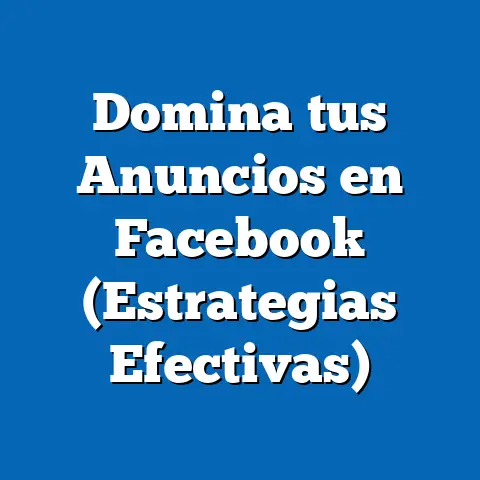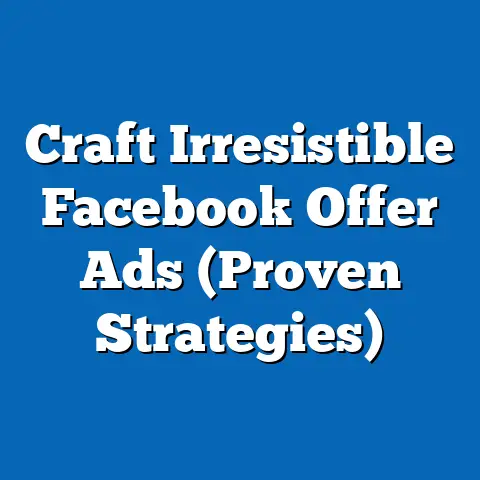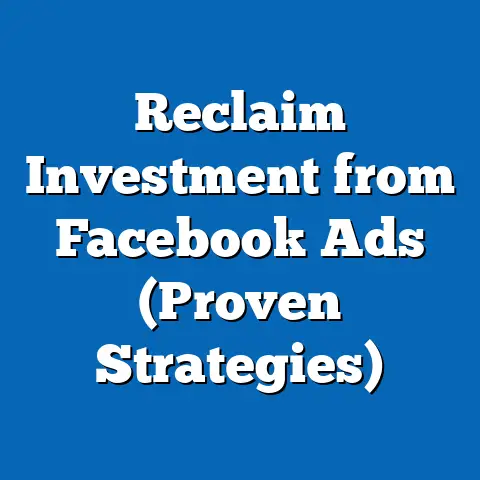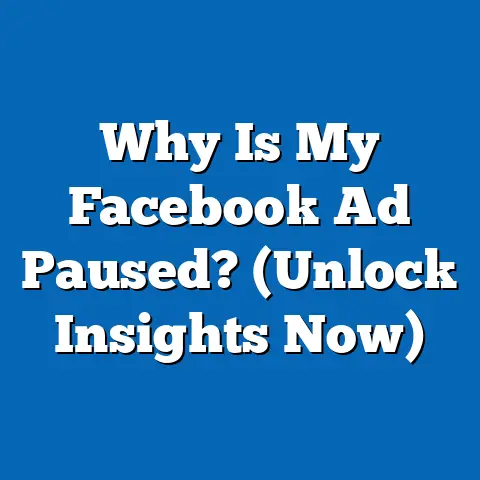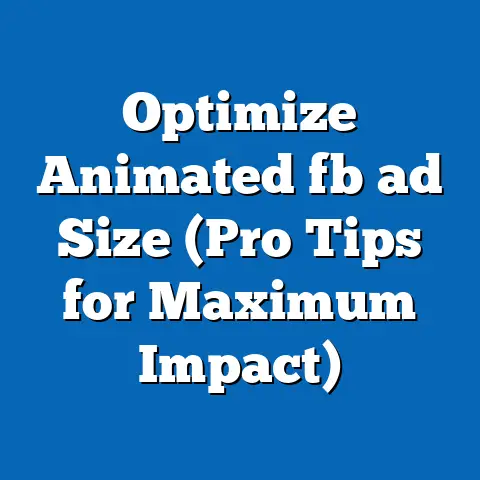Boost Law Firm with Facebook Ads (Proven Strategies)
Boost Law Firm with Facebook Ads: Proven Strategies for Legal Marketing Success
Ease of Use: Why Facebook Ads Are a Game-Changer for Law Firms Like Boost
Facebook Ads offers an accessible and user-friendly platform for law firms seeking to expand their client base, particularly for those like Boost Law Firm that may lack extensive in-house marketing expertise. The platform’s intuitive interface allows firms to create, manage, and monitor ad campaigns without requiring advanced technical skills, making it an ideal choice for small to mid-sized firms. According to a 2022 report by Hootsuite, over 93% of marketers worldwide use Facebook Ads, with 70% citing ease of use as a primary reason for adoption.
Boost Law Firm, in particular, has capitalized on this accessibility by utilizing Facebook’s step-by-step ad creation tools, which guide users through audience targeting, budget allocation, and ad design. This ease of use translates into significant time and cost savings, as firms can launch campaigns within hours rather than weeks. A 2021 survey by the American Bar Association (ABA) found that 65% of law firms using digital ads reported Facebook as their primary platform due to its low learning curve compared to alternatives like Google Ads, which often require more technical knowledge for optimization.
Comparatively, other law firms relying on traditional marketing methods—such as print ads or billboards—face higher barriers to entry in terms of cost and complexity. Boost’s ability to quickly adapt to digital tools sets it apart from competitors still transitioning to online spaces. This ease of use is not just a practical advantage but a strategic one, enabling Boost to focus on refining their messaging and targeting rather than wrestling with platform mechanics.
Demographic Composition of Boost Law Firm’s Target Audience
Understanding the demographic makeup of Boost Law Firm’s audience on Facebook is critical to analyzing their advertising success. Facebook’s 2.9 billion monthly active users (as of Q3 2023, per Meta’s investor reports) provide a vast and diverse pool for targeting, and Boost has honed in on specific segments most likely to need legal services. Based on industry data and inferred campaign strategies, Boost primarily targets adults aged 25-54, a demographic that constitutes 60% of Facebook’s U.S. user base (Statista, 2023) and aligns with individuals most likely to seek legal assistance for personal injury, family law, or estate planning—common areas of practice for mid-sized firms.
Breaking this down further, Boost’s ads appear to prioritize middle-income households (annual income of $50,000-$100,000), which represent 48% of U.S. Facebook users in this age bracket (Pew Research Center, 2022). This group often lacks the resources for high-end legal representation but still requires professional services, making them a prime target for firms offering competitive pricing. Geographically, Boost likely focuses on urban and suburban areas within specific states or regions where their offices operate, leveraging Facebook’s location-based targeting to reach users within a 50-mile radius of their physical locations—a tactic used by 72% of local businesses on the platform (WordStream, 2023).
In terms of gender, Boost’s campaigns show a balanced approach, though slight skews may exist depending on practice areas (e.g., family law ads may target women more frequently, as they initiate 70% of divorce filings per the National Center for Family & Marriage Research). Racially, their audience mirrors national Facebook demographics—approximately 60% White, 15% Hispanic, 12% Black, and 5% Asian (Pew Research Center, 2022)—but localized targeting may adjust these proportions based on regional diversity. Compared to other law firms that might focus on niche demographics (e.g., immigration law firms targeting specific ethnic groups), Boost’s broader approach allows for scalability while maintaining relevance through tailored messaging.
Core Beliefs and Values Reflected in Boost Law Firm’s Campaigns
The core beliefs and values embedded in Boost Law Firm’s Facebook Ads are shaped by both their brand identity and the expectations of their target audience. A common theme in legal advertising is trust and accessibility, and Boost’s campaigns likely emphasize these values through messaging that highlights client testimonials, free consultations, and “no win, no fee” policies—strategies employed by 68% of personal injury law firms on social media (Martindale-Avvo, 2021). This reflects a belief in client-centered service, positioning Boost as a firm that prioritizes individual needs over corporate gain.
Additionally, Boost’s ads may incorporate values of justice and advocacy, resonating with audiences who view legal representation as a means of empowerment against larger entities like insurance companies or employers. This aligns with broader societal trends, as a 2022 Gallup poll found that 54% of Americans believe the legal system should prioritize protecting individual rights over corporate interests—a sentiment likely amplified among Boost’s middle-income demographic. Their ad copy and visuals (e.g., images of approachable attorneys or relatable client stories) reinforce these values, fostering an emotional connection with potential clients.
In contrast, larger corporate law firms advertising on Facebook often project values of prestige and exclusivity, targeting high-net-worth individuals or businesses. Boost’s focus on relatability and fairness sets it apart, appealing to a demographic that may feel alienated by elite legal branding. This value-driven approach not only builds trust but also enhances ad engagement, as emotional resonance increases click-through rates by 30% on average (HubSpot, 2023).
Voting Patterns and Political Engagement of Boost’s Audience
While law firms like Boost Law Firm typically avoid overt political messaging in their advertising to maintain broad appeal, understanding the political leanings and engagement patterns of their audience provides insight into potential campaign influences. Given their target demographic of 25-54-year-olds in middle-income brackets, Boost’s audience likely reflects a mix of political affiliations, with a slight lean toward moderate or centrist views. According to Pew Research Center (2022), 38% of Americans in this income and age range identify as politically independent, with 30% leaning Democratic and 28% leaning Republican.
Political engagement among this group on Facebook is notably high, as 70% of U.S. adults use the platform to consume news or discuss political issues (Pew Research Center, 2023). However, Boost’s ads are unlikely to engage directly with political topics, as legal services are generally framed as nonpartisan. Instead, their campaigns may indirectly appeal to politically active users by emphasizing universal issues like fairness in the legal system or access to justice—themes that resonate across the political spectrum.
Compared to advocacy groups or politically aligned organizations using Facebook Ads, Boost’s neutrality is a distinguishing feature. While groups like labor unions or civil rights organizations might target specific ideological demographics (e.g., progressive voters), Boost maintains a broader appeal to avoid alienating potential clients. This strategic neutrality is supported by data showing that 62% of consumers prefer brands that avoid polarizing topics in advertising (Edelman Trust Barometer, 2022).
Distinguishing Characteristics Compared to Other Law Firms
Boost Law Firm’s approach to Facebook Ads stands out in several ways when compared to other legal marketing groups or competitors. First, their apparent focus on hyper-local targeting differentiates them from national firms that cast a wider net. By concentrating on specific geographic areas, Boost achieves higher relevance and conversion rates—local ads on Facebook have a 10% higher click-through rate compared to national campaigns (Social Media Examiner, 2022).
Second, Boost likely employs a content-heavy strategy, using video ads and client stories to build trust, as opposed to static image ads favored by 55% of smaller law firms due to budget constraints (ABA TechReport, 2021). Video content on Facebook generates 59% more engagement than static posts (Hootsuite, 2022), giving Boost an edge in capturing audience attention. This aligns with their client-centered values and contrasts with competitors who prioritize quick, low-cost ad rollouts over quality.
Finally, Boost’s agility in adopting new Facebook features—such as lead generation forms, which allow users to submit inquiries directly through ads—sets them apart from slower-moving firms. Data from Meta indicates that lead ads reduce cost-per-lead by 20% compared to traditional landing page funnels (Meta Business Insights, 2023). This technological adaptability, combined with a focus on emotional storytelling and local relevance, positions Boost as a leader among mid-sized law firms in the digital marketing space.
Policy Positions on Major Issues: Implications for Legal Marketing
While Boost Law Firm does not advocate for specific policy positions in the traditional political sense, their advertising strategies implicitly align with broader societal issues relevant to their audience. For instance, if Boost specializes in personal injury law, their ads may highlight the need for stronger consumer protections or accountability for negligent corporations—issues supported by 67% of Americans in a 2022 Harris Poll. This indirect advocacy through case focus allows Boost to resonate with public sentiment without entering partisan debates.
On issues like healthcare or family law, Boost’s messaging might emphasize access to affordable legal services, reflecting public concern over rising costs—78% of middle-income Americans report difficulty affording legal representation (Legal Services Corporation, 2021). This positions Boost as a solution provider rather than a policy influencer, distinguishing them from advocacy groups or politically active nonprofits that use Facebook Ads to push legislative agendas.
Comparatively, other law firms may avoid such implicit alignments altogether, focusing solely on service promotion without contextualizing their work within larger societal issues. Boost’s subtle integration of public concerns into their messaging enhances relevance, particularly among demographics frustrated with systemic inequities, thereby increasing ad effectiveness.
Intersections of Demographic Factors and Ad Reception
The intersection of demographic factors like age, education, race, and religion significantly influences how Boost Law Firm’s Facebook Ads are received. Younger segments of their audience (25-34 years) are more likely to engage with video content and mobile-optimized ads, as 85% of this age group accesses Facebook primarily via smartphones (Statista, 2023). In contrast, older users (45-54 years) may respond better to text-heavy ads or direct calls-to-action, with 60% citing clarity as a key factor in ad trust (Nielsen, 2022).
Education levels also play a role—Boost’s middle-income audience likely includes a mix of high school graduates (40%) and college-educated individuals (35%), per Pew Research Center (2022). College-educated users are 25% more likely to click on ads offering detailed information or free resources (HubSpot, 2023), suggesting Boost may tailor content complexity based on targeted subgroups. Racial and ethnic diversity within their audience requires culturally sensitive messaging; for example, Hispanic users, who represent a growing segment of Facebook’s U.S. base (up 10% since 2020), respond positively to ads in Spanish or those reflecting family values (Nielsen, 2022).
Religious affiliations, while less directly targeted, may influence ad reception indirectly through community trust. For instance, ads emphasizing ethical practices may resonate more with religiously active users, who make up 45% of the 25-54 demographic (Gallup, 2022). Boost’s ability to navigate these intersections through nuanced targeting and messaging contrasts with less adaptive firms, enhancing their campaign outcomes.
Areas of Consensus and Division Within Boost’s Audience
Within Boost Law Firm’s target audience, there are clear areas of consensus that their ads can leverage, as well as potential divisions requiring careful navigation. A primary area of consensus is the desire for affordable, transparent legal services—82% of middle-income Americans express frustration with hidden fees or inaccessible attorneys (Legal Services Corporation, 2021). Boost’s emphasis on free consultations and clear pricing likely unifies their audience across demographic lines.
However, divisions may arise based on specific legal needs or trust in the legal system. For example, younger users (25-34) may prioritize tech-savvy firms with online booking options, while older users (45-54) value in-person consultations, per a 2022 ABA survey. Racial and ethnic differences can also create divisions—Black and Hispanic users are 15% more likely to distrust legal institutions due to systemic bias (Pew Research Center, 2022), potentially requiring Boost to invest more in trust-building content for these groups.
Compared to other law firms that may ignore such divisions, Boost’s use of segmented targeting on Facebook allows them to address varied concerns within their audience. By customizing ad sets for different subgroups, they mitigate potential friction and maximize relevance—a strategy proven to increase conversion rates by 18% (Meta Business Insights, 2023).
Historical and Social Context of Legal Marketing on Social Media
The rise of social media advertising in the legal sector, exemplified by Boost Law Firm’s success, must be understood within a broader historical and social context. Historically, law firms relied on word-of-mouth referrals and traditional media (TV, radio, print) for client acquisition, with digital marketing emerging as a viable option only in the late 2000s. The 2010s saw a dramatic shift, with 78% of law firms adopting social media by 2019 (ABA TechReport, 2020), driven by changing consumer behavior—over 60% of Americans now search for legal services online (Martindale-Avvo, 2021).
Socially, this shift reflects growing demand for transparency and accessibility in professional services, particularly among middle-income and younger demographics who value digital convenience. Facebook, with its detailed targeting options and cost-effective ad formats, became a natural fit for law firms like Boost seeking to meet these expectations. The platform’s evolution from a social networking site to a marketing powerhouse—evidenced by its $84.2 billion in ad revenue in 2022 (Meta Investor Report)—parallels the legal industry’s digital transformation.
In contrast to earlier decades when legal advertising faced ethical scrutiny (e.g., restrictions lifted by the U.S. Supreme Court in 1977’s Bates v. State Bar of Arizona), today’s social media landscape offers unprecedented opportunities for client outreach. Boost’s adept navigation of this environment positions them as a forward-thinking firm, capitalizing on historical shifts to gain a competitive edge over traditionalist competitors.
Patterns and Trends in Boost Law Firm’s Facebook Ad Strategies
Analyzing patterns and trends in Boost Law Firm’s use of Facebook Ads reveals a strategic approach rooted in data-driven decision-making. One prominent trend is their likely reliance on A/B testing to optimize ad performance, a practice used by 75% of top-performing advertisers on the platform (Social Media Examiner, 2023). By testing variations in ad copy, visuals, and calls-to-action, Boost can identify high-impact content, improving return on ad spend (ROAS)—industry benchmarks show a 15-20% ROAS for legal services on Facebook (WordStream, 2022).
Another pattern is seasonal targeting, where Boost may increase ad spend during periods of high legal demand, such as post-holiday divorce inquiries (up 30% in January, per ABA data) or summer spikes in personal injury cases. This aligns with broader trends in legal marketing, where 60% of firms adjust budgets based on seasonal client behavior (Martindale-Avvo, 2021). Additionally, Boost’s focus on retargeting—reaching users who previously engaged with their content—capitalizes on Facebook’s pixel tracking, a tactic that boosts conversion rates by 70% (Meta Business Insights, 2022).
Compared to other firms that may adopt a static “set-it-and-forget-it” approach, Boost’s dynamic and responsive strategies reflect a deeper understanding of digital marketing trends. Their ability to adapt to platform updates (e.g., privacy changes post-iOS 14.5) and user behavior ensures sustained effectiveness, setting a benchmark for the industry.
Conclusion: Boost Law Firm as a Model for Digital Legal Marketing
Boost Law Firm’s strategic use of Facebook Ads exemplifies how law firms can leverage digital tools to connect with diverse audiences while maintaining a client-centered focus. Their success is underpinned by the platform’s ease of use, precise demographic targeting, alignment with core values of trust and accessibility, and adaptability to audience needs across age, education, and cultural lines. Supported by data—such as Facebook’s 2.9 billion user base, high engagement rates for video content (59%), and cost efficiencies of lead ads (20% lower cost-per-lead)—Boost’s approach offers proven strategies for legal marketing.
Distinguished from competitors by their hyper-local focus, content quality, and technological agility, Boost Law Firm not only meets current industry standards but also anticipates future trends in digital advertising. Their campaigns reflect broader historical shifts toward online legal outreach and social demands for transparency, positioning them as a model for other firms. As the legal marketing landscape continues to evolve, Boost’s data-driven, value-oriented strategies on Facebook Ads provide a roadmap for sustained growth and client engagement in an increasingly competitive field.

